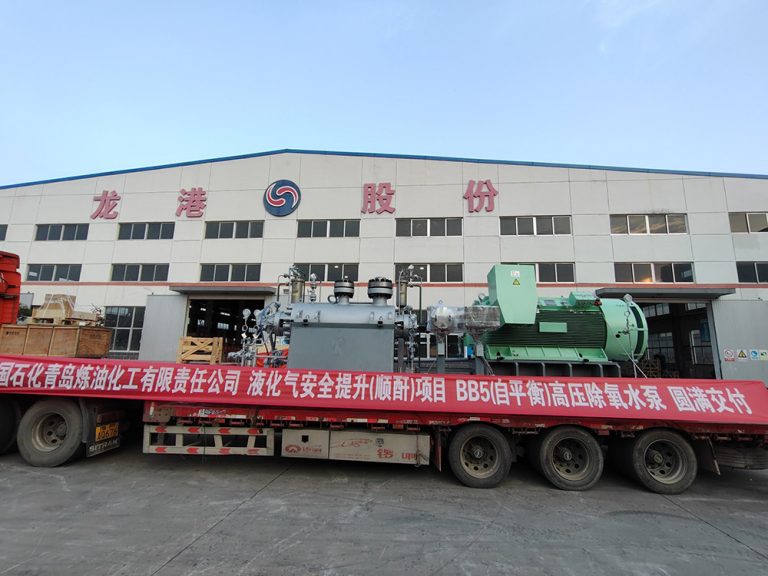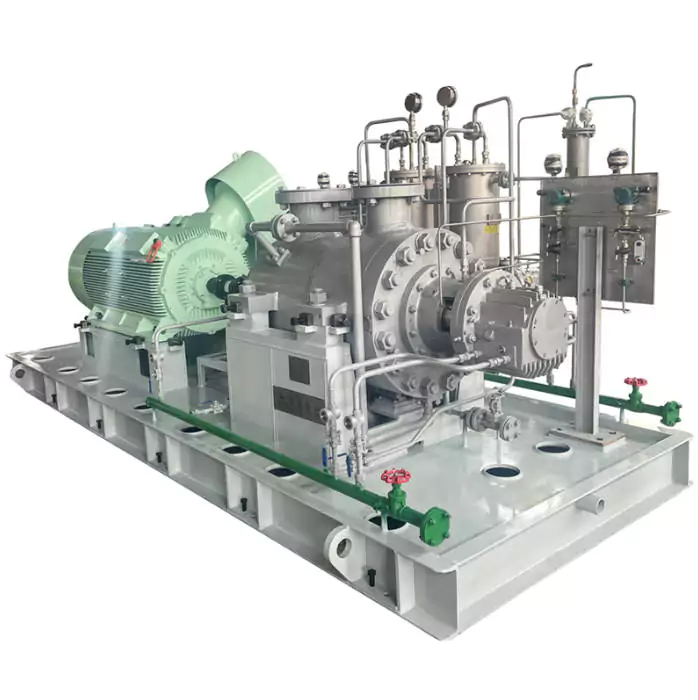Centrifugal pumps are essential components in various industrial applications, known for their efficient operation and ability to handle a wide range of liquids. These pumps operate on the principle of converting rotational energy, typically from a motor, into hydrodynamic energy that moves fluids through a system. Their unique design allows for consistent flow rates and pressure outputs, making them a popular choice for tasks ranging from water supply and irrigation to chemical processing and power generation. Understanding the key advantages of centrifugal pumps can offer significant insights into their operational benefits and applications.
Understanding the Fundamentals of Centrifugal Pumps
Basic Principles and Operation
Centrifugal pumps primarily utilize rotational energy to create fluid movement. At the heart of a centrifugal pump is the impeller, which spins and imparts kinetic energy to the fluid. As the impeller rotates, it pushes the liquid outward to the pump’s casing, where the kinetic energy transforms into pressure. This essential mechanism underpins the pump’s ability to transport liquids efficiently across various applications. The design also enables centrifugal pumps to accommodate diverse media, including clean liquids and those containing particulate matter, depending on the specific build and materials used.
Applications and Uses in Various Industries
Centrifugal pumps are widely utilized across various sectors, including water treatment facilities, chemical manufacturing plants, oil and gas industries, and agricultural irrigation systems. Their versatility allows them to manage different types of fluids, ranging from clean water to industrial chemicals and slurry mixtures. In petrochemical operations, for example, they transport crude oil and refined products efficiently. Likewise, in agricultural settings, centrifugal pumps are crucial for irrigation systems, ensuring reliable water supply to crops. This adaptability highlights the significance of centrifugal pumps in modern infrastructure and industrial processes.

The Core Efficiency Benefits of Centrifugal Pumps
Energy Conservation Attributes
One of the main advantages of centrifugal pumps is their energy efficiency. They are designed for minimal power losses, allowing them to operate continuously with reduced energy inputs. Efficient water transfer, for instance, effectively optimizes energy expenditures within both commercial and residential water supply networks. The operational mechanics enable these pumps to maintain a high level of performance while minimizing the power required to achieve the desired fluid movement. This feature is particularly attractive for companies looking to reduce operational costs while improving their environmental sustainability.
High Flow Rate Handling Capabilities
Centrifugal pumps are capable of handling high flow rates, making them ideal for applications requiring substantial liquid movement. This capability is attributed to their design and functionality, enabling them to manage varying fluid dynamics consistently. In industrial scenarios, high flow rates help streamline processes, from transporting raw materials to distributing finished products. The ability to maintain efficiency across diverse flow scenarios is a key characteristic that positions centrifugal pumps as reliable choices for high-demand applications.
Low Maintenance Requirements
Centrifugal pumps generally have lower maintenance requirements compared to other types of pumps. Their simple design features fewer moving parts, which inherently reduces wear and tear. Maintenance tasks, when needed, can often be performed without disconnecting the pump from its pipeline, saving time and resources. Additionally, newer designs incorporate advanced monitoring systems that enhance reliability and predict maintenance needs, further minimizing downtime. This attribute is highly valued in industries where uninterrupted operation is critical.
Longgang’s BB1-AXIALLY SPLIT DOUBLE SUCTION CENTRIFUGAL PUMP exemplifies this efficiency advantage in action. Designed according to the API610 standards, this pump combines a robust structure with exceptional performance capabilities. The double-suction impeller allows for effective balancing of axial forces, which enhances its efficiency while reducing noise and vibration during operation. This model is particularly suitable for various industries, including petrochemical, hydro-irrigation, and industrial power plants, showcasing its versatility and adaptability. Furthermore, the axial split design ensures easy maintenance and repair without disrupting the pipeline connections, providing significant operational advantages. Longgang’s BB1 pump stands out for its energy efficiency and reliability, making it a prime choice for industries seeking high-quality centrifugal pumps.

Comparing Centrifugal Pumps with Other Pump Types
Performance Metrics Analysis
When comparing centrifugal pumps with other pump types, such as positive displacement pumps, one can observe significant performance differences. Centrifugal pumps excel in delivering consistent flow rates with relatively low maintenance needs. Their design allows them to efficiently adapt to changes in fluid characteristics and flow demands, ensuring a reliable operation even in variable operational contexts. Additionally, centrifugal pumps generally offer better efficiency at higher flow rates, making them suitable for large-scale applications in industries like petrochemical and water supply.
In contrast, positive displacement pumps may offer higher pressure capabilities for specific niche applications, yet they often struggle with flow consistency. They may also require more frequent maintenance due to their intricate mechanical components, resulting in higher operational costs. Thus, in contexts demanding efficiency and reliability, centrifugal pumps demonstrate superior performance metrics, solidifying their preference in many industrial sectors.
Cost-Benefit Comparisons
Examining the cost-benefit structure of centrifugal pumps reveals important financial implications for industrial users. The initial investment for centrifugal pumps may be competitive, yet their longevity and efficiency often lead to lower lifecycle costs. These pumps minimize operational expenses through energy savings, especially in applications with high liquid movement requirements. Moreover, their low maintenance frequency contributes significantly to reduced downtime and labor costs, enabling better budgeting and resource allocation for businesses.
In comparison, other pump types might present lower up-front costs, but they often incur high operational costs due to increased energy consumption and maintenance requirements. Additionally, the potential for operational inefficiencies in these systems can necessitate costly upgrades or replacements over time. Centrifugal pumps, such as Longgang’s BB1-AXIALLY SPLIT DOUBLE SUCTION CENTRIFUGAL PUMP, provide a balanced approach where upfront investment aligns with long-term savings and dependability, driving value for industries requiring reliable fluid transport solutions.
Best Practices for Optimizing Centrifugal Pump Efficiency
Regular Maintenance Practices
To ensure the optimal efficiency of centrifugal pumps, implementing regular maintenance practices is crucial. Regular inspections can identify wear and tear that may lead to performance degradation over time. This involves checking the pump’s seals, bearings, and impellers for signs of damage or wear. By addressing these issues promptly, operators can prevent further damage and maintain the pump’s efficiency. Additionally, monitoring fluid conditions such as viscosity and temperature can help ensure that the pump operates within its designed parameters, reducing the likelihood of cavitation or other inefficiencies.
Moreover, conducting routine cleaning of the pump and its components can prevent the build-up of debris or sediments that may hinder performance. Keeping the pump area clear and allowing proper ventilation helps in extending the lifecycle of the equipment by minimizing overheating conditions. Regular lubrication of the bearings, as recommended by the manufacturer, also aids in decreasing friction, which could otherwise lead to increased energy consumption and wear. Investing in a well-defined maintenance schedule not only prolongs the operational life of centrifugal pumps but also enhances their efficiency across various applications.
Correct Sizing and Installation Techniques
The efficiency of centrifugal pumps largely depends on their correct sizing and installation techniques. Proper sizing ensures that the pump can handle the expected flow rates and pressure conditions without excessive energy consumption. Utilizing performance curves provided by manufacturers helps in selecting the appropriate size and type for specific applications. An improperly sized pump may lead to a variety of operational issues, such as cavitation, vibration, and reduced efficiency, which ultimately increases operational costs.
Installation plays a key role in optimizing centrifugal pump performance as well. Factors such as alignment, foundation integrity, and piping configurations can significantly impact how effectively a pump operates. Ensuring that the pump is accurately aligned with its drive system can prevent undue stress on the bearings and reduce wear. Additionally, employing the right pipe sizes and layouts minimizes friction losses and ensures that the pump operates efficiently at the desired flow rates. Proper installation eliminates potential bottlenecks and performance issues that could reduce the effectiveness of centrifugal pumps over time, resulting in more reliable and efficient operations.
Longgang’s BB1-AXIALLY SPLIT DOUBLE SUCTION CENTRIFUGAL PUMP exemplifies the importance of correct sizing and installation techniques. The design features of this pump allow for outstanding operation and efficiency across various applications. The axial split design enhances ease of maintenance, while the double-suction impeller ensures balanced operation with minimal vibration. These elements contribute to its efficiency, making it a preferred choice for industries such as petrochemical and hydro-irrigation. With its versatility and reliability, this pump is designed with optimal performance in mind, ensuring that it meets the needs of demanding industrial applications.
By embracing best practices for maintenance, sizing, and installation, users can significantly enhance the operational efficiency of their centrifugal pumps. This strategic approach not only improves the lifespan of the pumps but also drives better resource management and cost savings within the industries they serve.








